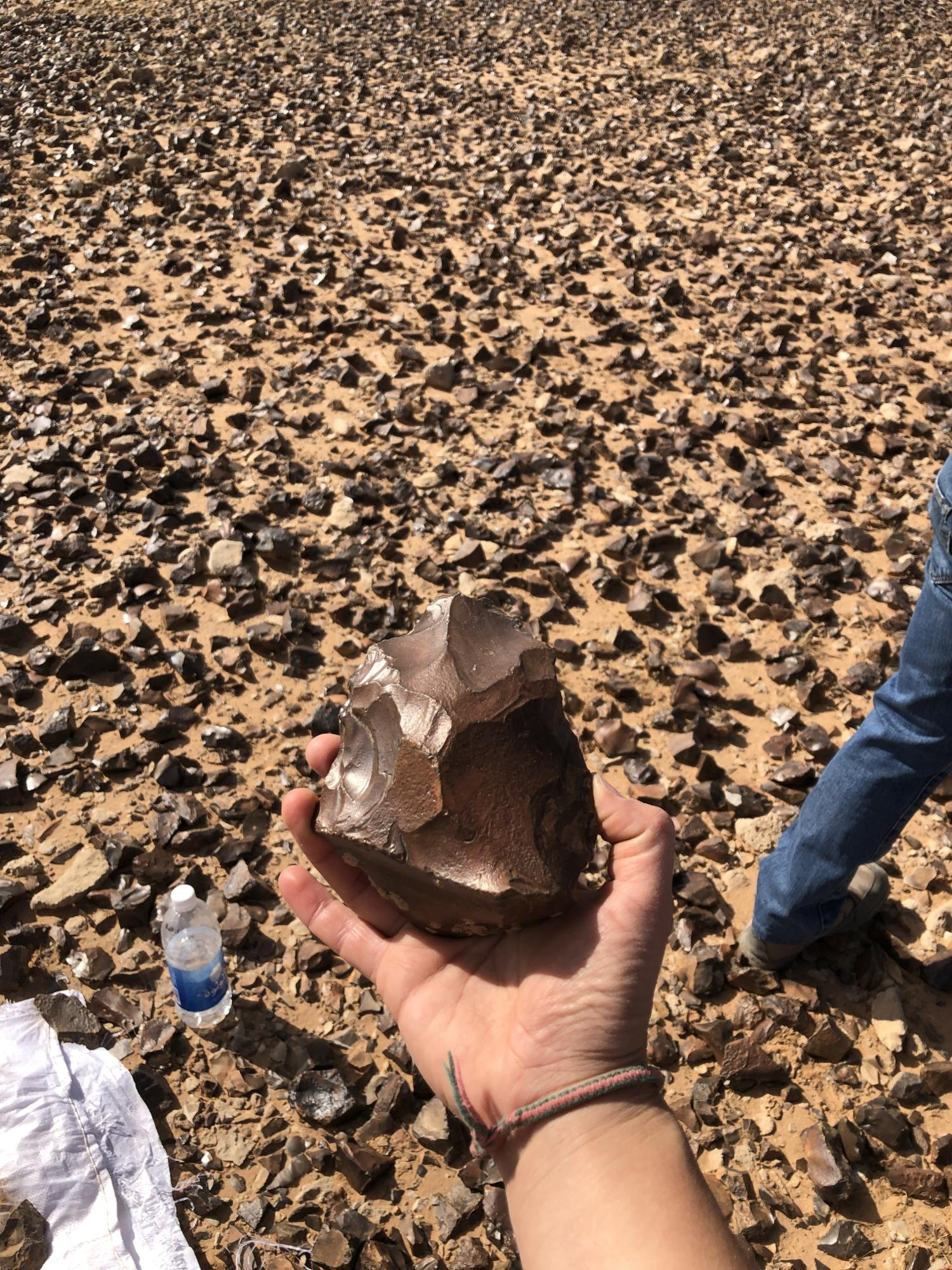A Groundbreaking Discovery
A team of archaeologists from the Free University of Brussels (VUB) has made a remarkable discovery in Iraq’s Western Desert, unearthing hand axes dating back millions of years and identifying previously unknown Paleolithic sites within a concentrated area.
Revealing the Past: A Major Archaeological Achievement
Leading the excavation is Ella Egberts from VUB, who conducted fieldwork as part of a pilot project. The research focused on analyzing archaeological surface materials in the Al-Shabakah region to understand the geomorphological history of the Iraqi Western Desert and assess the preservation of Paleolithic artifacts.

Egberts described the findings as a major breakthrough, stating, “Through targeted fieldwork, we identified multiple Paleolithic sites in a relatively small area. One location was selected for systematic study to analyze artifact distribution and conduct preliminary technological and typological assessments.”
Tracing Early Human Presence
The research area once contained a vast lake during the Pleistocene epoch but is now characterized by dry riverbeds known as wadis. Over eight hundred artifacts were collected, including early hand axes from the Old Paleolithic period and Levallois flakes from the Middle Paleolithic. These discoveries provide valuable insights into early human adaptation to shifting landscapes.
Egberts emphasized that other sites in the region also warrant further exploration, with the potential to reveal even more lithic materials. Expanding the study could offer a more comprehensive understanding of early human movement and behavior in the area.
Advancing Archaeological Knowledge
Beyond the excavation, the project had a strong educational component. Iraqi archaeology students received hands-on training in geo-archaeology and Paleolithic archaeology. Three students actively participated in fieldwork, while a post-excavation workshop at Al-Qadisiyah University further engaged students and scholars in discussions about Iraq’s prehistoric past.

The findings were also presented at a conference in Karbala, bringing together a multidisciplinary academic audience. The research team shared their discoveries with the public and media at the Writers’ Union in Najaf, and local elementary school children were introduced to prehistoric flint tools, fostering interest in Iraq’s ancient history.
Overcoming Challenges in the Field
Despite Iraq’s complexities as a research destination, the expedition progressed smoothly. Checkpoints were present but did not significantly hinder operations.
“The Iraqi State Board of Antiquities and Heritage values our work and has encouraged us to continue our research,” Egberts noted.
Future Research and Expanding Exploration
Egberts plans to continue her research at VUB, with the next phase focusing on securing funding to reconstruct environmental changes during the Pleistocene and further investigate early human presence in the Western Desert.
The project was made possible through funding from the British Institute for the Study of Iraq, awarded due to Egberts’ honorary fellowship at the University of Leicester. This collaboration enhances knowledge of human evolution while strengthening international efforts to preserve and study Iraq’s rich archaeological heritage.
These discoveries mark a significant step in uncovering Iraq’s prehistoric past, shedding new light on early human history in one of the world’s most archaeologically rich yet underexplored regions.

